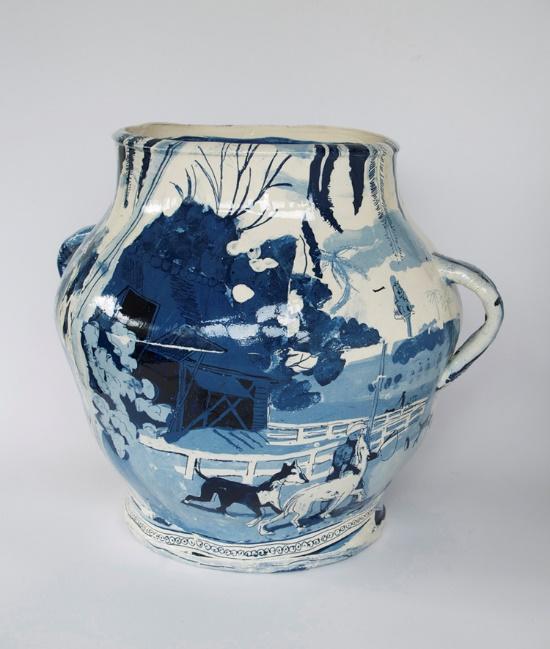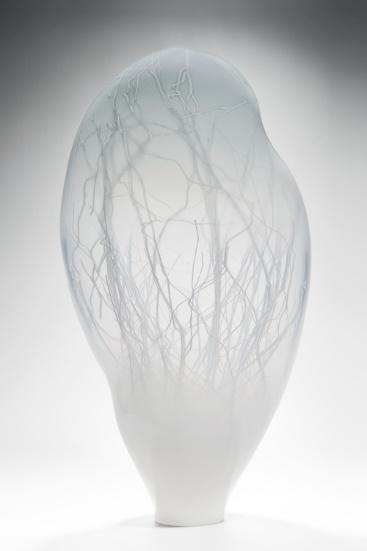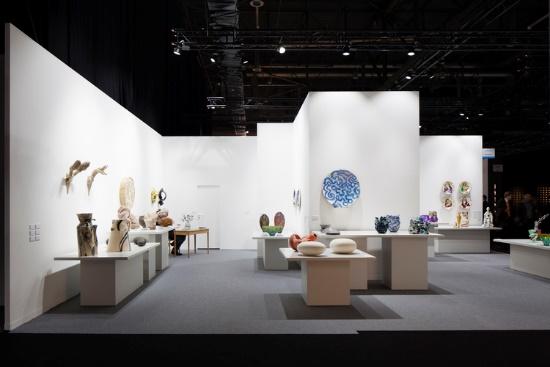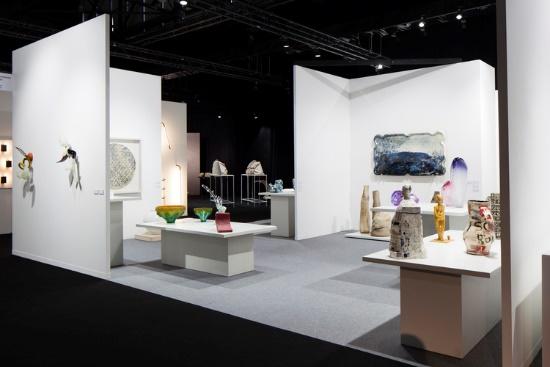Introduction
The aim of the submitting this proposal is to demonstrate the significance of the exhibition subject matter, in particular, the ‘concept’ of the contemporary craft. In my opinion, the contemporary craft theme is of great importance nowadays as it reflects the socio-cultural concerns of the modern society and makes people broaden their horizons.
Theme
It goes without saying that Ideological and moral guidelines are continually changing in unison with new trends of social development. Such guidelines are the principal stimulus to the artistic creativity. Consequently, the modern aesthetic art is a mix of vanguard ideas of postmodernism and a set of traditional human values. In fact, an essential role in the development of modernity was played by the handiwork of Morris.
Displeased by the tastelessness of so-called “consumer goods”, he believed that arts and crafts are inseparable and should be marked with the stamp of the artist (Pearce 2003). Having mastered professions of the cabinetmaker, glassblower, and printer, Morris established workshops, in which the product was to be the creative fusion of arts and crafts (Macdonald 2006). Morris had no one equal in creating patterns for tapestries and upholstery fabrics inspired by plant motifs. Plenty of ornaments of Morris are popular nowadays as well.
One of Morris’s associates Jones, whose decorative style was influenced by the Pre-Raphaelites epoch. His oeuvre better known as fake is a confirmation of the fact that arts and crafts movement had a powerful influence on the development of Art Nouveau (Pearce 2003). According to Baudrillard (1994), “all objects that are possessed submit to the same abstractive operation and participate in a mutual relationship in so far as they each refer to the subject” (7). It shows that the subject embraces a wide range of corresponding objects.
Taking into consideration the above mentioned, I have the idea of organizing the exhibition covering the contemporary craft in order to promote the innovative craft that is exciting, intriguing and challenge people’s belief about what is possible. This type of exhibition should broaden horizons of visitors. It would be a special exhibition of the contemporary craft on the international level keeping the current with the global art scene.
Content
The exhibition would include a diversity of international artists working with different materials such as ceramics, glass, metal, textile, and wood. It would be the different object of art displayed by the group of artists working with same materials. The following illustrations demonstrate perspective exhibits:


To choose the content of the exhibition means to organize it and the space in which it would occur in such a way that exhibited craft objects would be fully manifested (Lash & Urry 1994). The location of objects exhibited in the gallery would be clearly defined in advance. According to Howes (2014), exhibits would be arranged by color, by subject, by performing technique, in chronological order, etc.
As it is generally accepted, the central place would be given to the brightest or the most significant exhibit. All components of the exposition (works themselves and design elements) would be in the framework of the same thematic and stylistic unity. Therefore, the integrity of the exhibition would be achieved, and artistic sense of exhibited objects would be uncovered. In addition, I would like to consider the sound accompaniment as music would enhance the perception of the audience and create the desired atmosphere.
There are some helpful studies we learn during the course. For instance, it seems appropriate to take as an example the ArcelorMittal Orbit sculpture. According to Marini (2013, p. 588), the principal aim of it was “to materialize a spirit of national unity during the Olympics”. In my opinion, it is the perfect example of the art revealing the beauty along with modern social and cultural concerns.
Thus, the exhibition would provide a complete picture of the contemporary craft.
Resources
I would like to place the exposition in the gallery. In my point of view, some specialist skills would be required to install and maintain displays. The curator of the exhibition in connection with specialist would create imagery in conjunction with the concept of the exhibition considering suitable graphic and technological solutions and carefully preserving the concept of the given exposure. This process would involve the following aspects:
- the development of models for color printing of brochures for visitors;
- the manufacturing of the exposition design elements (backdrops, showcases, and panels) (Bennett 1995);
- the maintaining of non-standard equipment (showcases, catwalks, etc.)
- the labeling design;
- the development of multimedia content such as interactive presentation, 3D animation, and video, etc.
Among other things, some organizational issues should be taken into account. For instance, it is necessary to have a special insurance for the exhibited works of art, the schedule of the importation of works as well as their removal after the exhibition. Moreover, information about artists (handed out to visitors’ flyer and a folder with the profiles of all the exhibited artists), price list (if required), and other logistical details would be elaborated. I believe that the best way to solve these questions is to visit other expositions, galleries, or, at least, to talk to people who have made such an exhibition before. Hence, the curatorial approach allows creating such an exhibition that would be an independent work of art.
Design
It goes without saying that the selected gallery would look presentable and clean. Moreover, room dimensions would correspond to exhibits to create the proper surrounding and atmosphere (Julier 2000). It would be a place that is thematically appropriate for the exhibition, in particular, the modern space with laminate flooring and white or dark walls without patterns. Windows in the room would be missing or would have dark curtains as large windows could prevent the appropriate enlightenment of crafts.
Besides, it is necessary to equip the gallery where the exposition would be placed (Marincola 2006). In this regard, I imagined that I am the visitor viewing exhibits. As a result, it was stated that it is significant to think about how to make sure that visitors passing through the exhibition halls would feel as the audience and be exhibitors at the same time. What would they see in the first place? What direction would choose next? Is there any ‘dead zone’? Based on Krauss (1996), I would add the description of all the exhibits and ensure there are signs clarifying if they can touch exhibits to answer those questions.
Speaking of the items and displays, they would be of different types. For instance, I consider the following examples are rather appropriate:


All in all, every aspect concerning design including even posters and music would be taken into account.
Impact
To encourage an appreciation and understanding of the contemporary craft by a wide audience that comprises everyone from enthusiast who want to enjoy the contemporary craft to those looking for special knowledge and collecting advice. Speaking of the mass interpreting, it is worth turning one’s attention to Cooper (2001), who believes that the modern globalized world created its bewildering abundance.
In other words, the most common features of the mass became dispersion, consumption, and production. In his turn, Crary (1991, p. 75) determines “connections between the modernization of subjectivity and the dramatic expansion and industrialization of visual/auditory culture”. Precisely speaking, he states the amazing unity of freedom and creativity of the audience and mass consumption. I agree with Levin (1995), who claims that art is an integral part of any conscious person.
What is more, I would like to include an outline for a program of events related to the exhibition. There would be lectures, performances, and workshops capturing visitors’ attention and explaining the purpose of the exhibition to some extent. Every visitor has a choice: either to try to understand the language of the exhibition and make some effort associated with it or simply do not go to the exhibition of contemporary art, because he or she does not understand it. However, the misunderstanding of the contemporary art, particularly, of the contemporary craft, has no effect on the viewer because craft itself is a symbolic object (Vogel 2013).
As a matter of fact, misunderstanding is the most powerful engine of awareness of the meaning of art. Sincere man says, “I do not understand that”, thus announces his intention to understand the concept. After that, the art is revealed to him in its entirety. Awareness and experience of such things make people kinder, smarter, and more adaptable to any situation in life (Krajina 2014). Otherwise, we see plenty of examples when people become motivated to wrong actions and do not appreciate what has been created before, what is created now, and do not appreciate the work and talent that surrounds them. Such a society would inevitably turn into a barbaric one. Fortunately, the exposition directed at cultural enrichment of the society.
In this regard, the exhibition is not just a group of works hanging on the museum principle. At any exhibition, as well as any product, there is the idea that the organizer is trying to convey. In this case, the idea is to express the essence of the contemporary craft.
Conclusion
In conclusion, the suggested proposal of the contemporary craft exhibition covers a variety of aspects that would be taken into account during its organization. It seems important to point out that the proposal is based on references and involves the theme, content, design, resources and impact of the exhibition that would undoubtedly attract visitors and develop their cultural vision of the world.
References
Baudrillard, J 1994, ‘The System of Collecting’, in J Elsner & R Cardinal (eds), The Cultures of Collecting, Reaktion Books, London, pp. 7-24.
Bennett, T 1995, The Birth of the Museum, Routledge, London.
Crary, J 1991, Suspensions of Perception: Attention, Spectacle, and Modern Culture, MIT Press, Cambridge, MA.
Howes, D 2014, ‘Introduction to sensory museology’, The Senses and Society, vol. 9, no. 3, pp. 259-267.
Julier, G 2000, The Culture of Design, Sage, London.
Krajina, Z 2014, Negotiating the mediated city: Everyday Encounters with Public Screens, Routledge, London.
Krauss, 1996, ‘Postmodernism’s Museum without Walls’, in R Greenberg, B Ferguson, & S Nairne (eds.), Thinking about Exhibitions, Routledge, London.
Lash, S & Urry, J 1994, Economies of Signs and Space, Sage, New York.
Levin, T 1995, ‘Introduction’, in S Kracauer (ed.), The Mass Ornament: Weimar Essays, Harvard University Press, Cambridge, pp. 1-32.
Macdonald, S 2006, A Companion to Museum Studies, Blackwell Publishing, Malden.
Marincola, P 2006, What Makes a Great Exhibition?, Philadelphia Exhibition Initiatives, New York.
Marini, H 2013, ‘The ArcelorMittal Orbit’s Ambivalent Effect and the London Olympics: Art, Regeneration, Business and Sustainability’, Contemporary Theatre Review, vol. 23, no. 4, pp. 587–592.
Pearce, S 2003, Interpreting Objects and Collections, Routledge, London.
Taste Contemporary Craft, n.d. Web.
Vogel, F 2013, ‘Notes on Exhibition History in Curatorial Discourse’, New Institutionalism, vol. 21, no. 1, pp. 46-54.